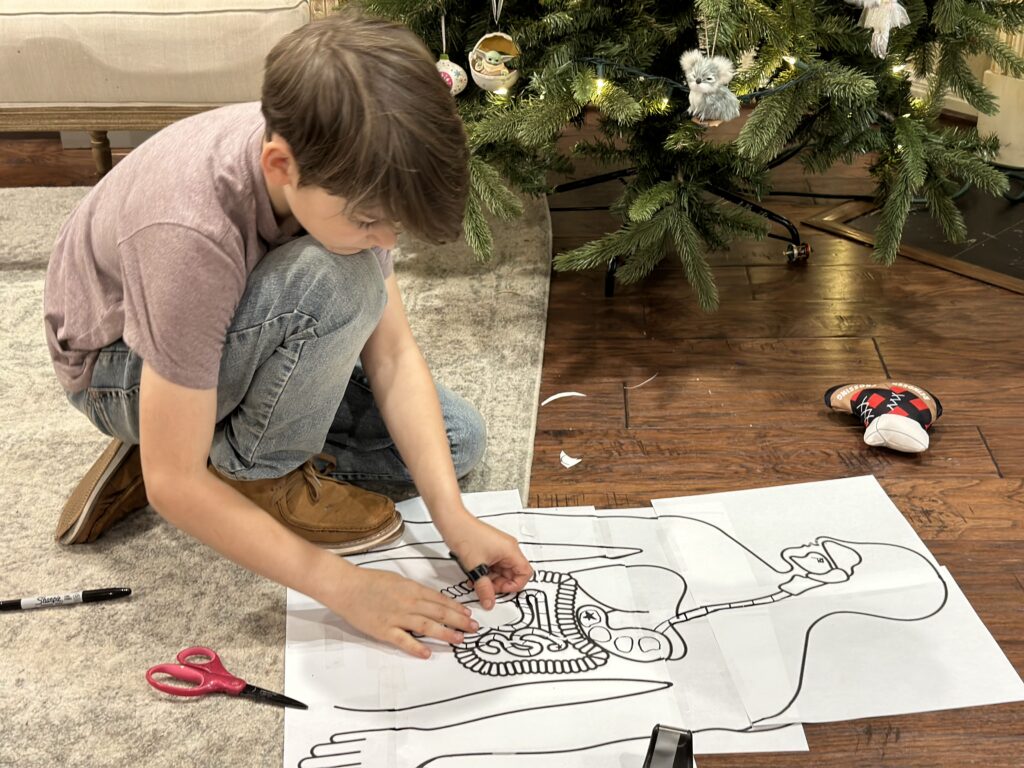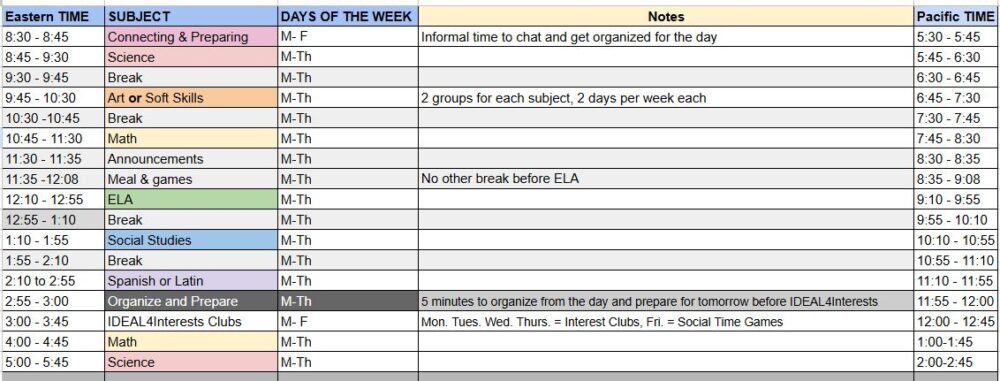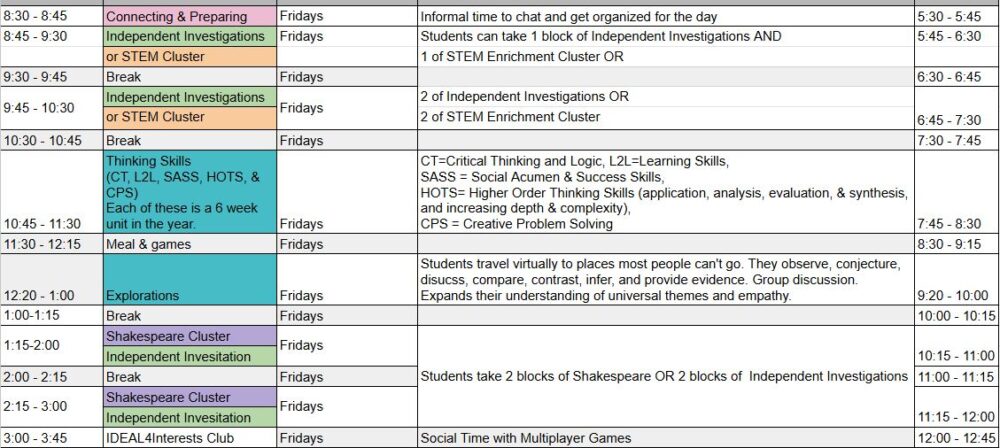Weekly Schedule
Monday-Thursday include – Science, Soft Skills, Art, Math, lunch and social time, English Language Arts, Social Studies, Foreign Language, and optional interest group clubs and student government.
Fridays are dedicated to classes that go beyond a regular school curriculum and are especially suited for gifted students, such as independent investigations, Enrichment Clusters, Virtual Explorations, and creative and critical thinking.
This structure ensures a comprehensive and enriching educational experience, tailored to meet the needs and interests of our students



Full-time or Part-time Options
Full-Time: Our full-time program runs from 8:45 am ET to 3:45 pm ET, Monday through Friday. It includes traditional academics, Tech & Engineering, Art, Interest groups, Independent Investigations, and Explorations of new places, people, and ideas, along with social times.
Part-Time: Families can choose a morning or afternoon bundle, or the “Basic Bundle” of Math, Lunch and Social Time, and English Language Arts or as few as one class, where they still enjoy social interaction with their peers.
Our main program spans 32 weeks in two semesters, September -December, and January – May. The unique nature of our curriculum and instruction means that students often cover more material than a traditional 40-week school year. With small class sizes and accelerated learning, we can offer additional opportunities that are particularly beneficial for gifted and some 2e students.
The Schedule


